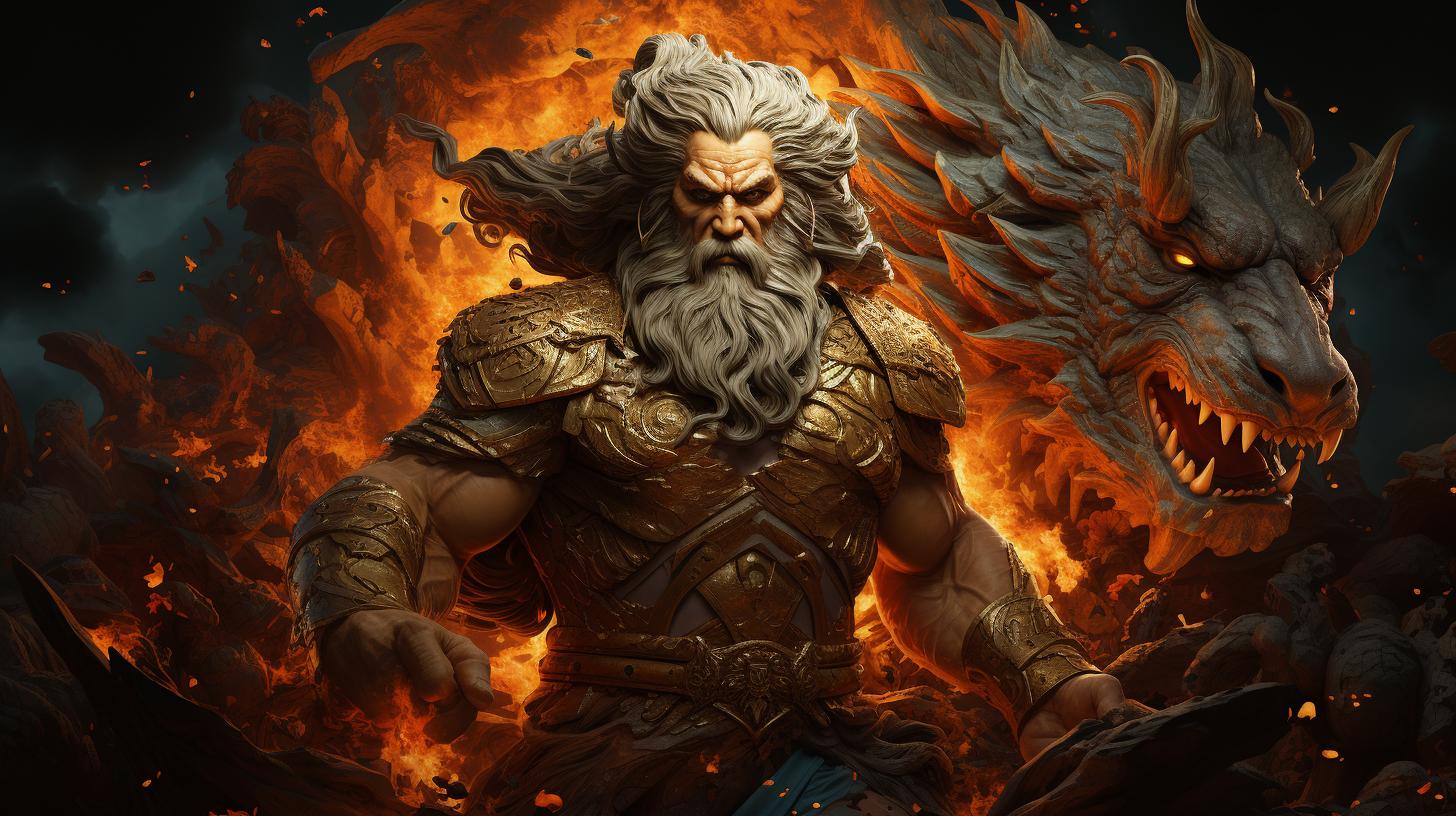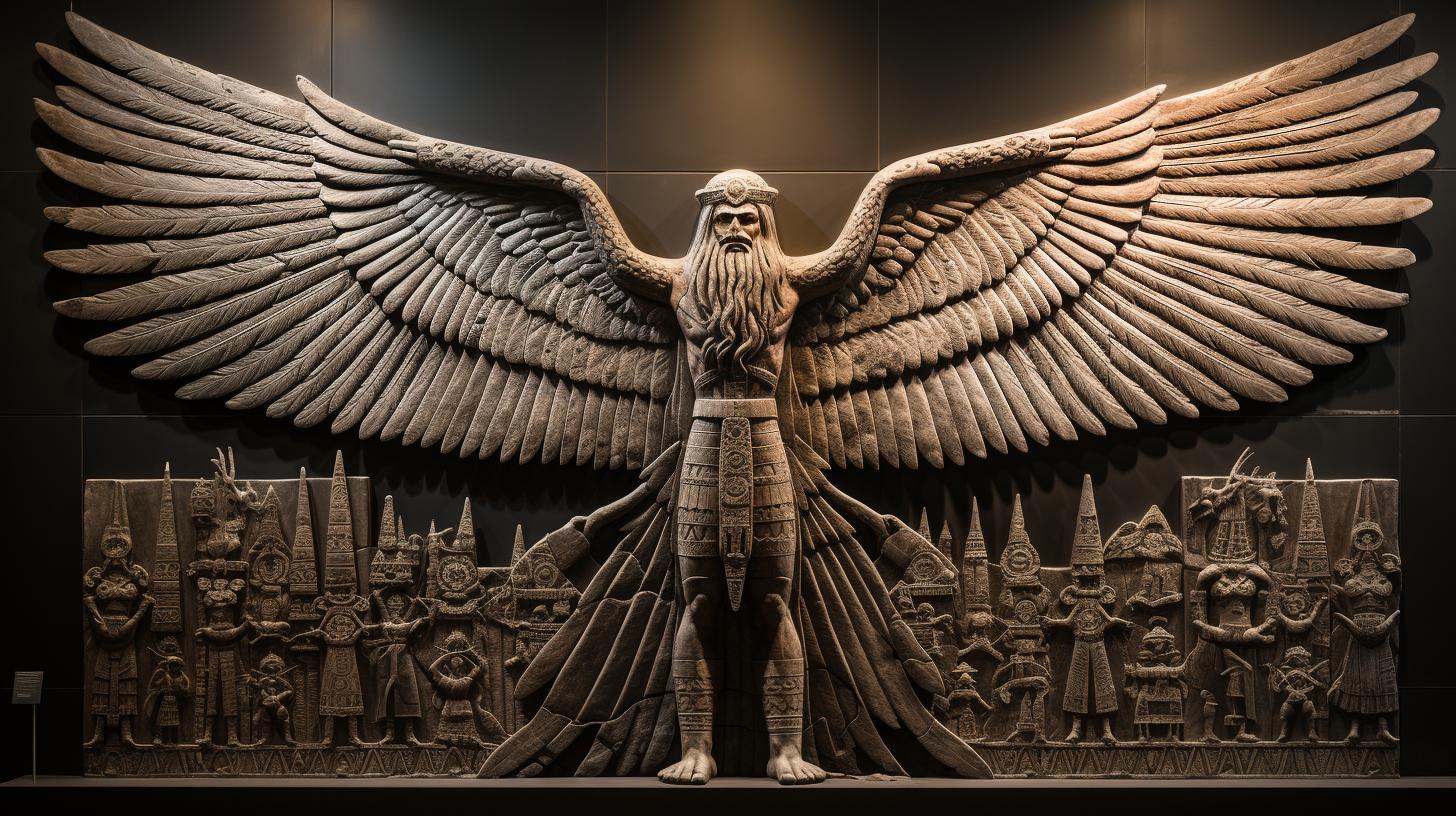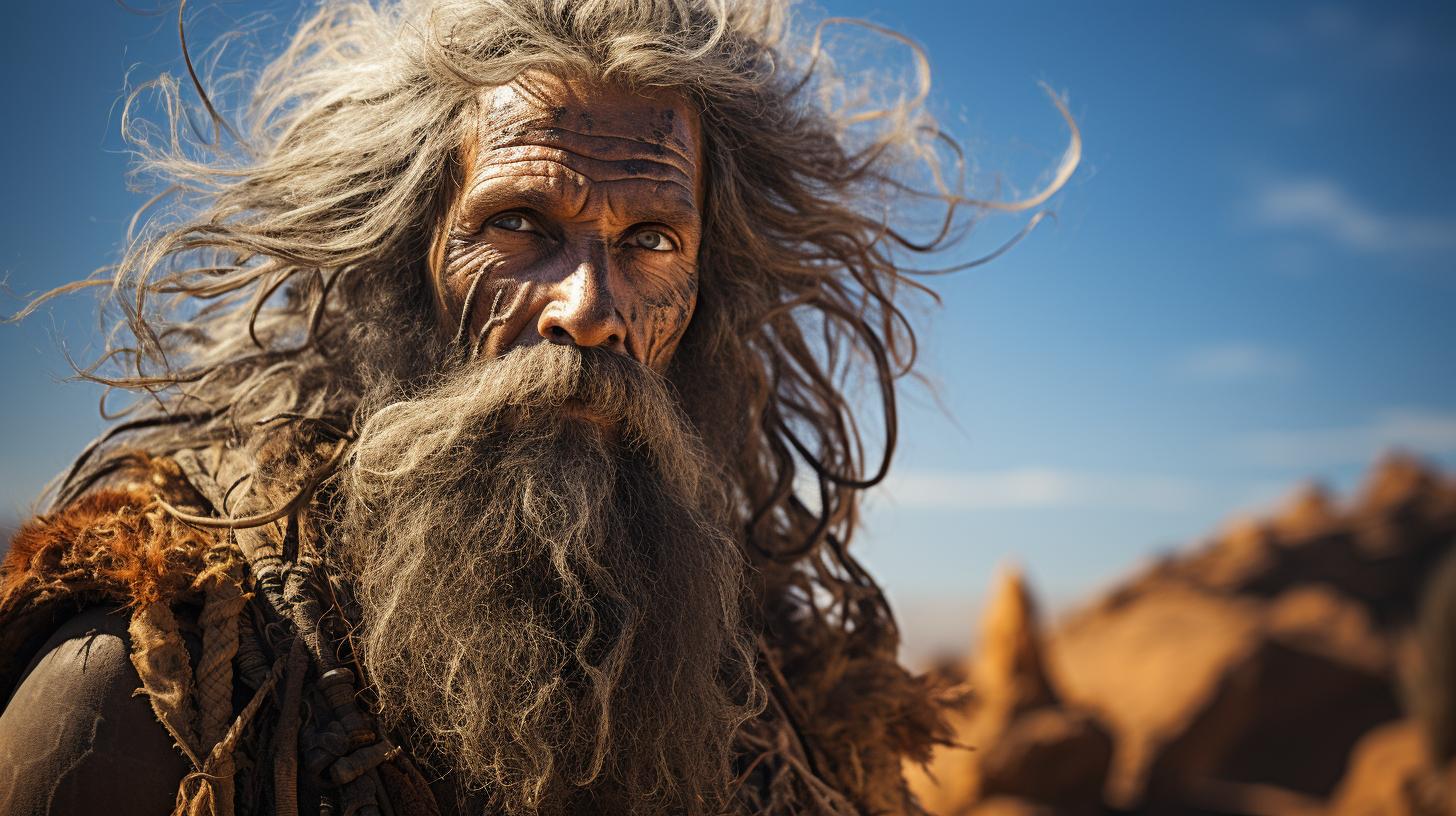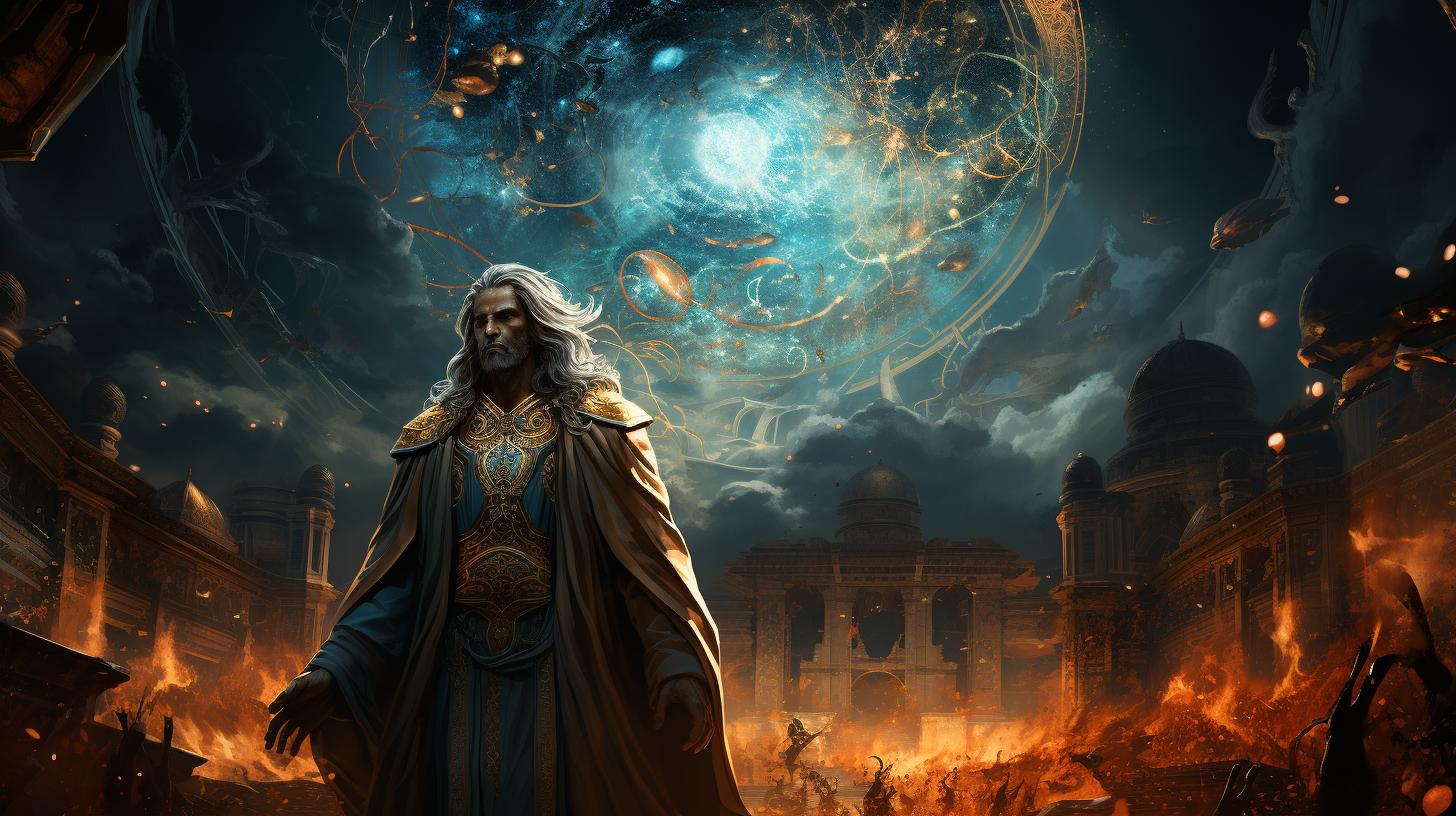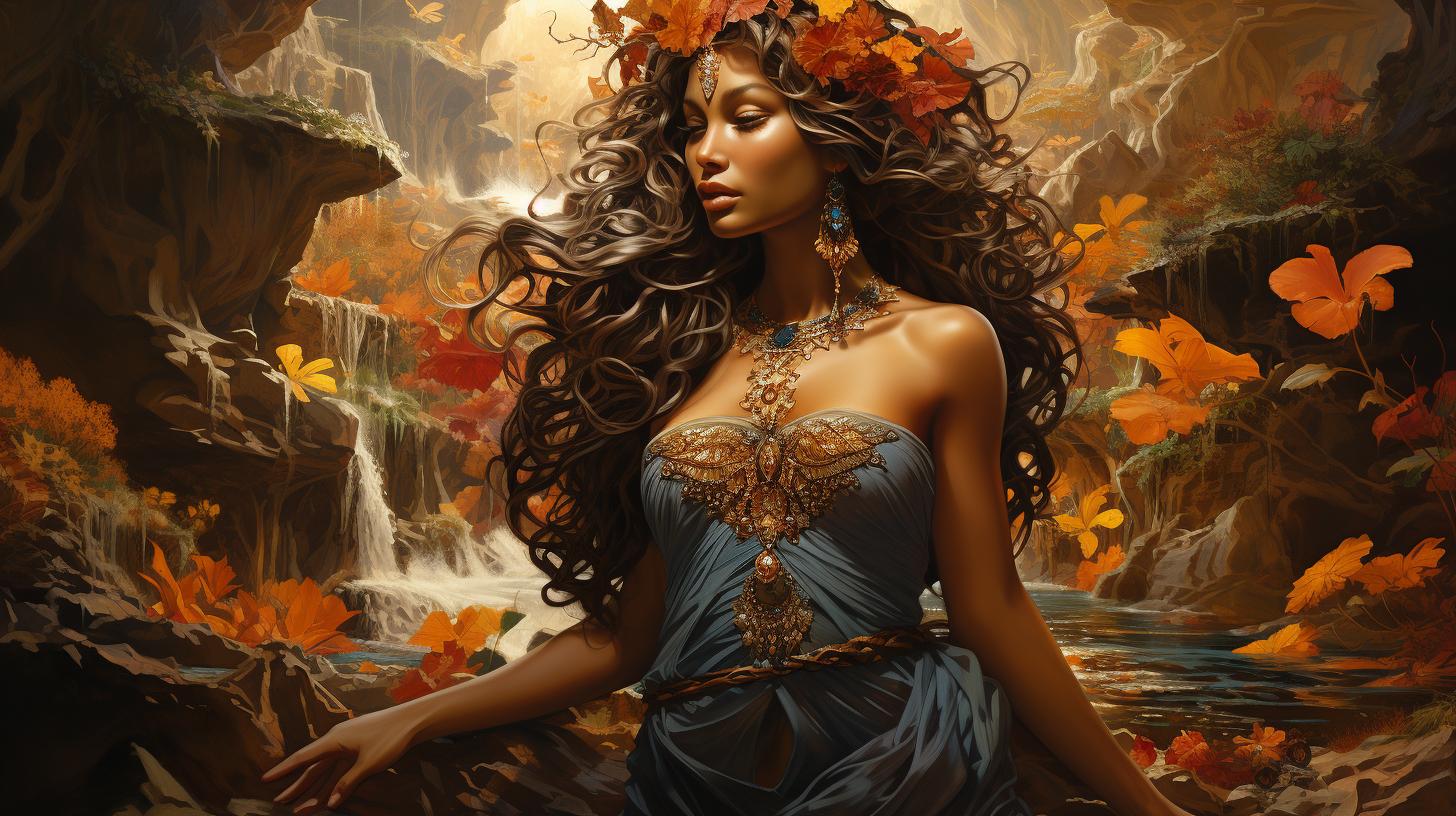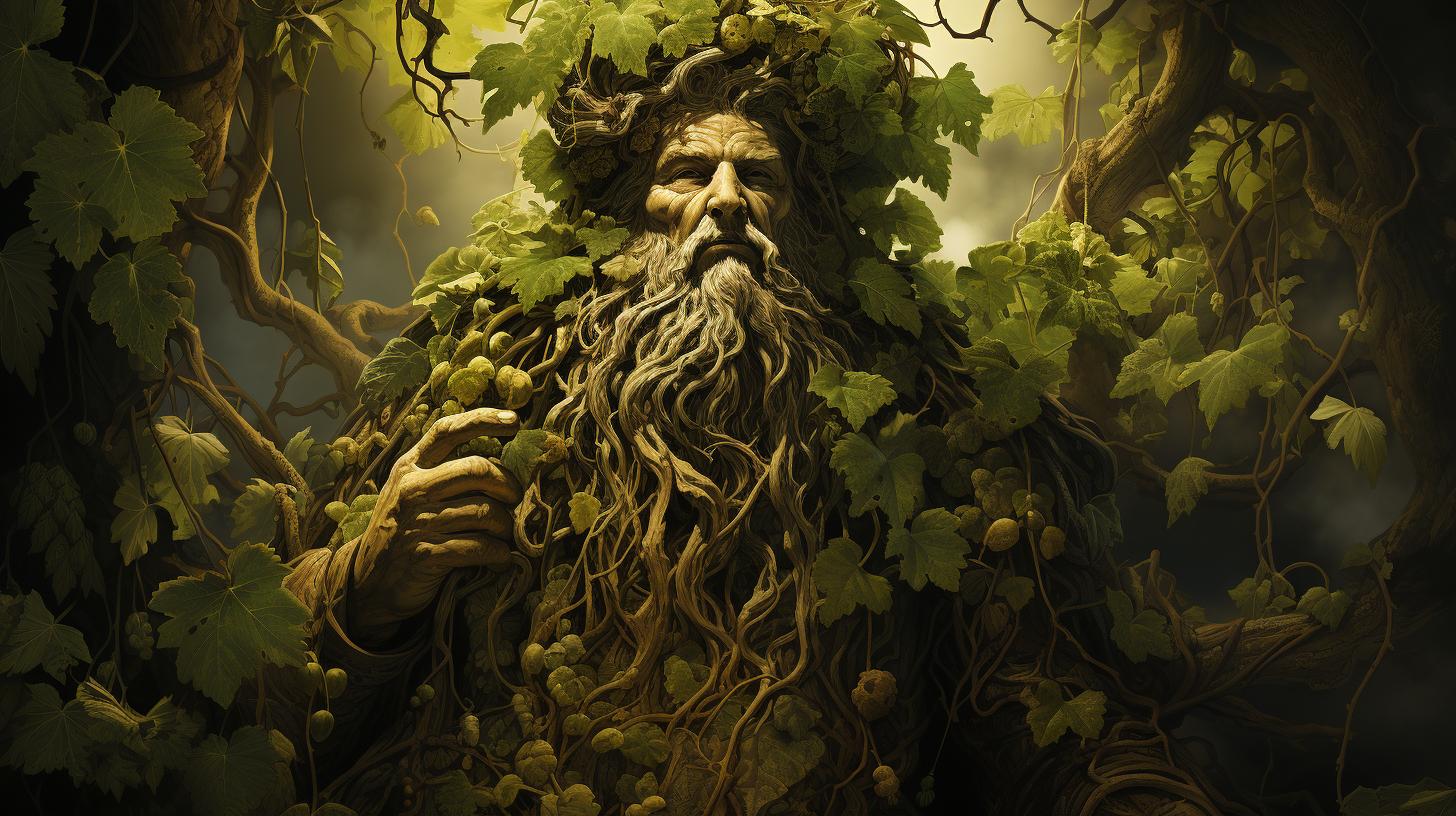Discover the Epic Tale of Gilgamesh, the King: Unraveling the Ancient Story
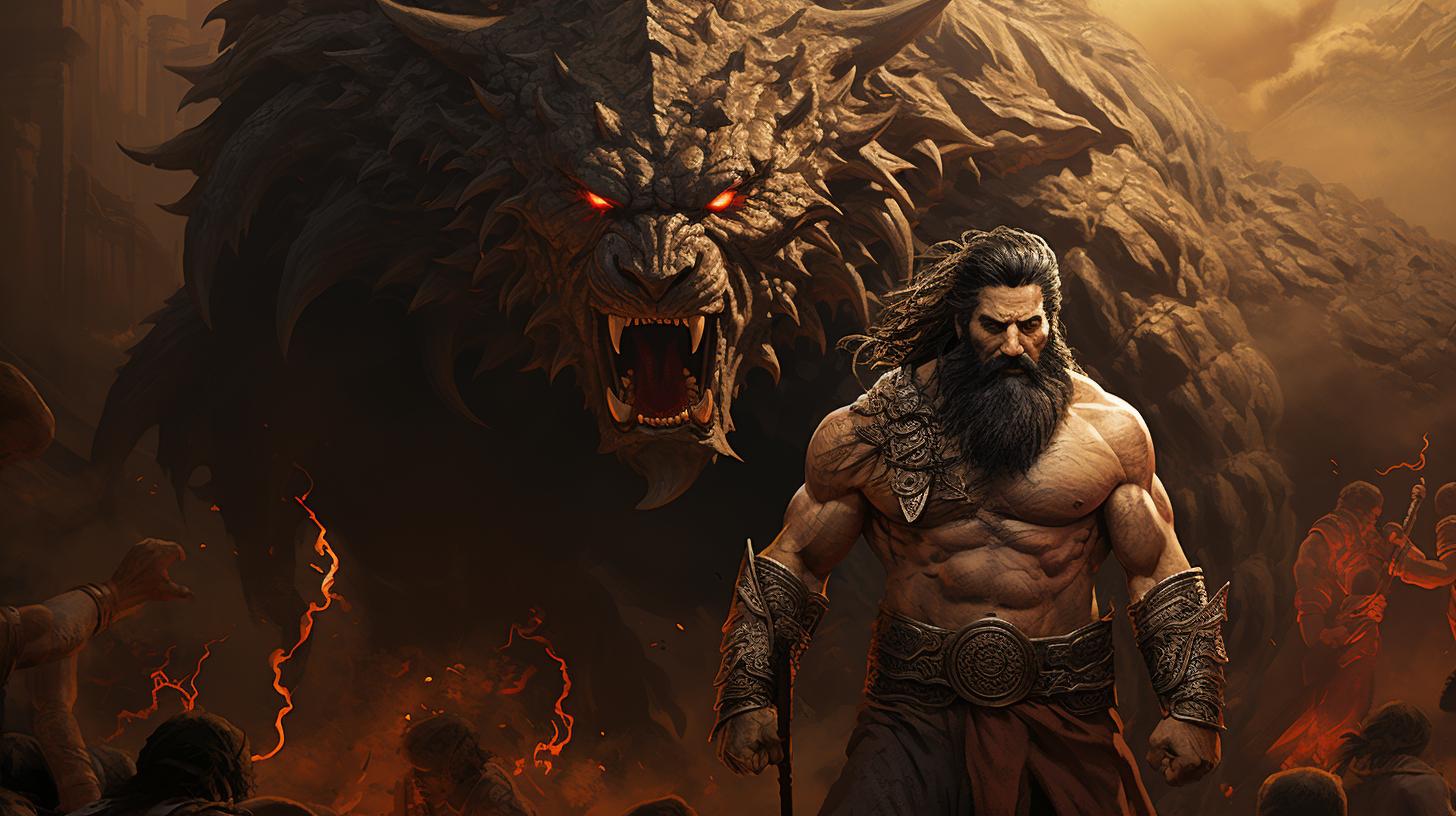
The story of the Epic of Gilgamesh, an ancient epic poem, revolves around the mythical king of Uruk. Gilgamesh’s journey takes us through his quest for immortality, facing challenges and delving into the meaning of life.
This epic also highlights Gilgamesh’s role in the construction of the mighty walls of Uruk and his influence on Mesopotamian civilization. Explore the historical and mythological aspects of this captivating tale, its themes, and its significance in ancient Mesopotamia.
Join the discussion and discover the legacy of Gilgamesh’s story.
About the Author
As we delve into the captivating story of the Epic of Gilgamesh, it’s important to understand the author behind this ancient masterpiece. The exact identity of the author remains unknown, but we do know that the epic was written by a skilled Babylonian poet or scribe, believed to have been based on even earlier Sumerian sources.
This talented writer crafted a narrative that has stood the test of time, captivating generations with its mythological elements and historical significance.
Through their words, the author paints a vivid picture of Gilgamesh, the legendary king of Uruk, and his extraordinary journey. This epic tale not only showcases the author’s storytelling prowess but also reflects the values, beliefs, and aspirations of ancient Mesopotamian society.
The author’s ability to blend historical accounts with mythical elements has made the Epic of Gilgamesh a timeless literary treasure.
Join us as we explore the layers of this ancient epic, deciphering the author’s intent, and uncovering the profound impact the story has had on literature and culture throughout history.
By gaining insight into the author’s background and intentions, we can better appreciate the significance of the Epic of Gilgamesh and its enduring legacy.
The Epic of Gilgamesh: An Overview
The Epic of Gilgamesh is a mesmerizing ancient poem that takes us on a journey through the life of the legendary king of Uruk. It is one of the oldest known works of literature, dating back to the second millennium B.C.
This epic narrative weaves together themes of heroism, mortality, and the quest for immortality. Gilgamesh, a larger-than-life character, is a blend of divine and human qualities, known for his immense strength and significant role in shaping his civilization.
The poem consists of eleven tablets, with an optional twelfth tablet that differs in content and is often excluded. The most complete version of the epic, written in Akkadian, was uncovered in the library of the Assyrian king Ashurbanipal and is believed to be the work of the Babylonian author Shin-Leqi-Unninni.
At its core, the epic follows Gilgamesh’s pursuit of meaning and purpose after the death of his dear friend Enkidu. Leaving the comforts of his kingdom, Gilgamesh embarks on a perilous quest to find Utnapishtim, a figure with knowledge of eternal life.
Along the way, he confronts various challenges and tests his limits.
This overview offers a glimpse into the rich tapestry of the Epic of Gilgamesh, giving us a taste of the profound themes, captivating characters, and the enduring legacy of this ancient Mesopotamian masterpiece.
The Historical King Gilgamesh
Within the epic tale of Gilgamesh, a central focus is placed on the historical figure of King Gilgamesh himself. Gilgamesh, believed to be the fifth historical king of Uruk, played a significant role in the development and prosperity of his civilization.
Although Gilgamesh is a semi-mythical character, his existence is supported by historical records and references. Regarded as a hero and a demigod, Gilgamesh possessed extraordinary strength and left a lasting legacy through his leadership and accomplishments.
The King Gilgamesh mentioned in the Sumerian King List and other historical accounts was known for his accomplishments, which include the construction of the grand walls of Uruk. These walls not only served as a symbol of the city’s strength but also provided security and protection for its inhabitants.
By examining the historical significance of Gilgamesh, we gain insight into the impact he had on the region and his contributions to the growth of Mesopotamian civilization. Understanding the historical context surrounding Gilgamesh allows us to delve deeper into the epic’s narrative and explore the enduring legacy of this remarkable king.
The Characters of the Epic: Gilgamesh and Enkidu
In the Epic of Gilgamesh, the two central characters are Gilgamesh, the powerful king of Uruk, and Enkidu, a wild man created by the gods to rival Gilgamesh’s strength. Gilgamesh is depicted as a complex figure, both admired and feared by his subjects.
Gilgamesh’s character undergoes significant development throughout the epic. Initially portrayed as arrogant and tyrannical, he evolves into a compassionate and introspective leader. Enkidu, on the other hand, is introduced as a savage beast, but through his friendship with Gilgamesh, he becomes more civilized and gains wisdom.
- Gilgamesh: The brave and ambitious king who possesses superhuman strength.
- Enkidu: Created by the gods to counter Gilgamesh’s power, he later becomes his loyal friend.
Together, Gilgamesh and Enkidu embark on various adventures, challenge gods and monsters, and ultimately question the meaning of life and the inevitability of mortality.
Their bond is crucial in the development of the epic’s narrative as it explores themes of friendship, loyalty, and the power of human connection.
The contrasting personalities and the evolving relationship between Gilgamesh and Enkidu provide deep insight into the human condition and the complexities of power, ambition, and personal transformation.
Through their interactions, the epic raises profound questions about the nature of humanity and the pursuit of immortality.
Themes in the Epic: Mortality and Immortality
In the epic tale of Gilgamesh, the themes of mortality and immortality play a significant role, reflecting the existential questions that have intrigued humanity throughout history. The narrative explores Gilgamesh’s realization of his own mortality after the death of his dear friend Enkidu, triggering a relentless pursuit for eternal life.
Through various encounters and challenges, Gilgamesh comes face to face with the inevitability of death and the limitations of human existence. His quest for immortality symbolizes the universal desire to transcend the bounds of mortality and attain eternal life.
The epic delves into the fear of death and the longing for immortality that resides within the human psyche. It raises fundamental questions about the meaning of life, the purpose of human existence, and the pursuit of an everlasting legacy.
- Reflects on the inevitability of death and the limitations of human existence.
- Explores the universal desire for eternal life.
- Delves into the fear of death and the longing for immortality.
- Raises questions about the purpose and meaning of human life.
- Examines the pursuit of leaving a lasting legacy.
The themes of mortality and immortality in the epic of Gilgamesh resonate with readers, provoking contemplation about the transient nature of life and the quest for lasting significance.
This exploration of profound themes makes Gilgamesh’s story not only an intriguing ancient tale but also a reflection of the human condition.
Gilgamesh’s Quest for the Meaning of Life
In the epic tale of Gilgamesh, the quest for the meaning of life is a central theme that drives the narrative. After the death of his dear friend Enkidu, Gilgamesh feels compelled to find answers to the ultimate questions of existence.
He embarks on a journey, seeking out the elusive Utnapishtim, the only human who has achieved immortality.
Throughout his quest, Gilgamesh faces numerous challenges and trials, each one testing his determination and resilience.
He encounters divine beings, navigates treacherous terrains, and engages in intense introspection. Although he does not attain physical immortality, his relentless pursuit grants him insight into the transient nature of human life and the importance of leaving a lasting impact on the world.
While Gilgamesh’s quest for the meaning of life ultimately results in self-discovery rather than the attainment of immortality, it raises profound philosophical questions that continue to resonate with humanity. It forces us to contemplate the brevity of our existence and the legacy we leave behind.
As we explore Gilgamesh’s journey, we delve into themes of mortality, the fear of death, and the eternal search for purpose. His story serves as a reminder that the quest for meaning is a fundamental part of the human experience, transcending time and culture.
Gilgamesh’s Adventures and Challenges
In the epic journey of Gilgamesh, the king of Uruk encounters a series of adventures and confronts various challenges that test his strength and resilience. These trials push Gilgamesh to his limits and shape his character throughout the narrative.
One of his initial challenges is the battle against Humbaba, the guardian of the Cedar Forest. Gilgamesh displays his courage and strategic thinking to defeat this monstrous creature, showcasing his prowess as a warrior.
Another significant adventure unfolds when Gilgamesh and his loyal companion Enkidu set out to slay the Bull of Heaven. This mighty feat of valor demonstrates their bond as comrades and their determination to protect their city from divine retribution.
However, the most impactful challenge for Gilgamesh comes when he fails in his pursuit of immortality. This realization forces him to confront his mortality and the limitations of human existence. Through this ordeal, Gilgamesh learns the importance of cherishing the present moment and finding purpose in the face of impermanence.
As he overcomes each obstacle, Gilgamesh’s growth as a king and as an individual becomes evident. These adventures shape his understanding of the world and his place within it, ultimately leading him to discover profound truths about life.
The Construction of the Great Walls of Uruk
The ancient city of Uruk is renowned for its impressive fortifications, particularly the great walls that surrounded it. Considered a monumental engineering feat of its time, the construction of these walls played a pivotal role in shaping Uruk’s identity and establishing its status as a powerful city-state.
The walls, made of mud brick and stone, were meticulously designed and fortified to protect the city from external threats. They encircled Uruk, forming a formidable barrier against invasions and ensuring the safety of its inhabitants.
These walls not only provided security but also symbolized the might and grandeur of the city and its ruler, King Gilgamesh.
Archaeological evidence suggests that the walls of Uruk were not only massive but also adorned with breathtaking artwork and architectural embellishments.
Intricate mosaics, colorful frescoes, and ornate reliefs adorned the gates and walls, depicting scenes of triumph, divine protection, and mythical creatures.
The construction of the walls was a massive undertaking requiring skilled labor, meticulous planning, and extensive resources.
The endeavor showcased the innovative architectural techniques of ancient Mesopotamia, including the use of baked bricks, strengthening buttresses, and strategic defense systems.
Ultimately, the great walls of Uruk served as both a physical and symbolic representation of the city’s strength and Gilgamesh’s dominance.
This majestic fortification stands as a testament to the advanced civilization and enduring legacy of Uruk, leaving us in awe of the ancient skills and ingenuity employed in its construction.
Gilgamesh’s Influence on Mesopotamian Civilization
Gilgamesh, the legendary king of Uruk, left an indelible mark on Mesopotamian civilization.
His achievements and actions shaped the cultural and historical landscape of the region.
Firstly, Gilgamesh’s construction of the great walls of Uruk fortified the city and served as a symbol of its grandeur and strength.
These monumental walls not only provided a sense of security and protection but also showcased the advanced architectural prowess of the Mesopotamians.
Furthermore, Gilgamesh’s influence extended beyond his city-state. As the fifth historic king of Uruk, his existence was well-documented in the Sumerian King List and referenced by other historical figures of the time.
His reign represented a period of flourishing arts, literature, and trade for the Mesopotamian civilization.
The epic story of Gilgamesh itself became an integral part of Mesopotamian culture, leaving a lasting impact on literature, religious beliefs, and shared mythology.
It inspired subsequent generations of writers and storytellers, influencing the development of future epic narratives.
In conclusion, Gilgamesh’s influence on Mesopotamian civilization cannot be overstated. From his construction endeavors to his historical significance, his legacy reverberated throughout the region and continues to captivate the imagination of scholars and enthusiasts to this day.
The Epic’s Significance in Ancient Mesopotamia
The Epic of Gilgamesh holds significant historical and cultural value in ancient Mesopotamia. This epic poem provides insights into the beliefs, values, and worldview of the people during that era. The story not only showcases the heroic deeds and adventures of Gilgamesh but also delves into complex themes that were prevalent in Mesopotamian society.
One of the primary themes explored in the epic is the concept of mortality and the search for immortality. Through Gilgamesh’s quest for eternal life, the poem highlights the Mesopotamians’ fascination with overcoming death and attaining everlasting existence.
Furthermore, the epic sheds light on the importance of kingship and the ideal qualities of a ruler. Gilgamesh, as a king, represents the embodiment of ideal leadership, emphasizing the responsibilities and duties expected from a just and powerful monarch in Mesopotamian society.
The construction of the great walls of Uruk, attributed to Gilgamesh, showcases the emphasis on city-building and fortification, underscoring the significance of urban development and defense strategies in ancient Mesopotamia.
The epic serves as a treasure trove of historical references and cultural practices, offering historians and scholars invaluable insights into the daily lives, religious beliefs, and social structures of ancient Mesopotamians.
By examining the epic’s significance in ancient Mesopotamia, we gain a deeper understanding of the historical, cultural, and sociopolitical contexts that shaped the development of this influential civilization.
Primary Sources and Interpretations of the Epic
Understanding the Epic of Gilgamesh relies on primary sources and interpretations that shed light on this ancient tale.
Scholars have relied on clay tablets from the library of King Ashurbanipal, discovered in the 19th century, to piece together the most complete version of the epic. These tablets contain the Akkadian language rendition of the story, believed to have been written by the Babylonian author, Shin-Leqi-Unninni.
Additionally, deciphered Sumerian texts and fragments provide valuable insights into the earlier versions and influences behind the epic. These primary sources enable scholars to compare different variations, reconstruct missing sections, and unravel the layers of mythology and history intertwined in the narrative.
Interpreting the epic involves analyzing the cultural and historical context of ancient Mesopotamia. Scholars explore the themes of mortality, the search for immortality, heroism, and the social and political aspects depicted in the tale.
Through comparative studies and cross-references with other Mesopotamian texts, they strive to uncover the beliefs, values, and underlying messages communicated in the epic.
By examining primary sources and interpreting the Epic of Gilgamesh, we gain a deeper understanding of the text’s origins, its cultural significance, and its timeless themes that continue to resonate with audiences today.
Professional Development Resources for Teaching the Epic
Are you an educator interested in incorporating the epic tale of Gilgamesh into your curriculum? Look no further! We have compiled a list of professional development resources to help you effectively teach the story and engage your students in this ancient and captivating narrative.
- Teacher’s Guides: Explore comprehensive teacher’s guides, containing lesson plans, discussion questions, and activities tailored to different grade levels. These guides provide a structured framework for teaching the epic, ensuring a meaningful learning experience.
- Online Courses: Enroll in online courses designed specifically for educators, aiming to deepen your understanding of the epic of Gilgamesh and equip you with innovative teaching techniques.
Gain valuable insights and exchange ideas with fellow educators from around the country.
- Worksheets and Handouts: Access a variety of worksheets and handouts that can be used to reinforce key concepts, facilitate class discussions, and encourage critical thinking.
These printable resources serve as valuable aids in engaging students with the epic’s themes and characters.
- Interactive Materials: Explore interactive multimedia resources, such as videos, animations, and interactive websites, that can bring the epic of Gilgamesh to life in your classroom.
Utilize these engaging materials to enhance your students’ learning experience and foster a deeper connection with the ancient story.
- Professional Communities: Join online professional communities of educators dedicated to teaching ancient literature.
Connect with like-minded colleagues, share best practices, and discover additional resources to enrich your teaching of the epic of Gilgamesh.
By utilizing these professional development resources, you can confidently introduce your students to the intriguing world of Gilgamesh, fostering their love for literature, history, and critical thinking.
Enhance their understanding of ancient civilizations while uncovering the timeless themes embedded within this legendary epic.
Join the Discussion: Exploring the Legacy of Gilgamesh’s Story
Delve into the rich legacy of the Epic of Gilgamesh and engage in a captivating exploration of this ancient tale’s enduring significance. Join us as we unravel the profound themes and timeless lessons embedded within Gilgamesh’s story.
Discover the complex characters of Gilgamesh and Enkidu, their heroic and mythological qualities intertwined with their faults and vulnerabilities. Uncover the central themes of mortality and immortality that fuel Gilgamesh’s relentless quest for the meaning of life.
Embark on a journey through the epic’s captivating narrative as we explore Gilgamesh’s adventures and the challenges he encounters along the way. Gain insight into the construction of the great walls of Uruk and the profound influence Gilgamesh had on the development of Mesopotamian civilization.
Immerse yourself in the extensive body of primary sources and interpretations of the epic, shedding light on the multiple facets of this ancient masterpiece. Engage with professional development resources designed to enhance the teaching and understanding of the Epic of Gilgamesh.











